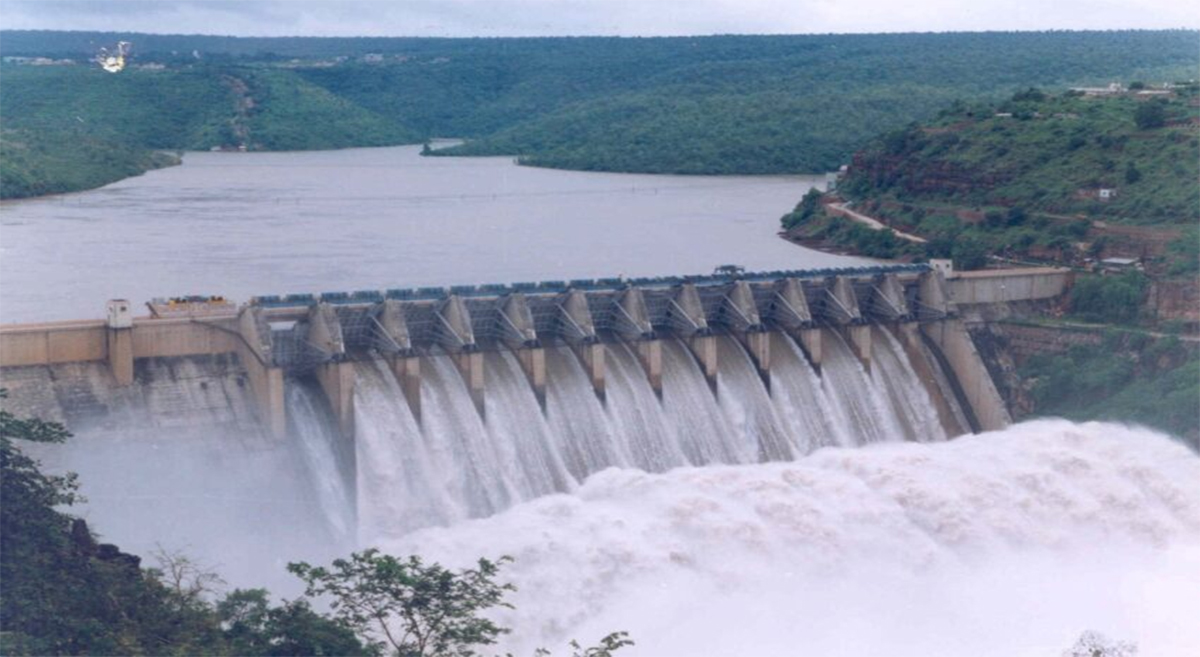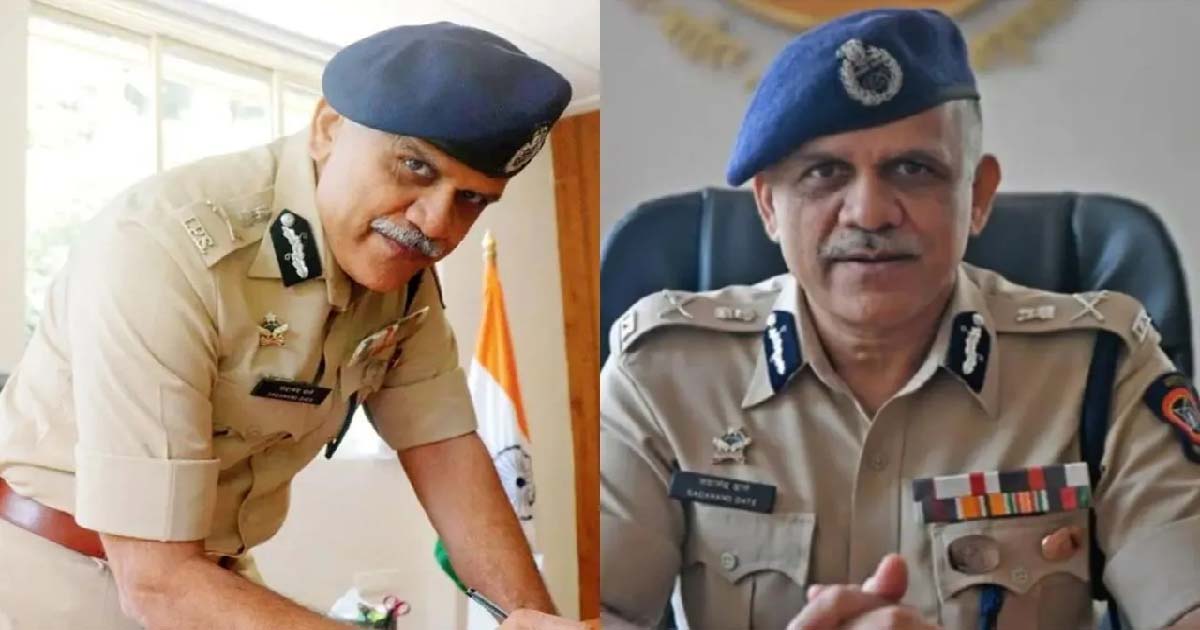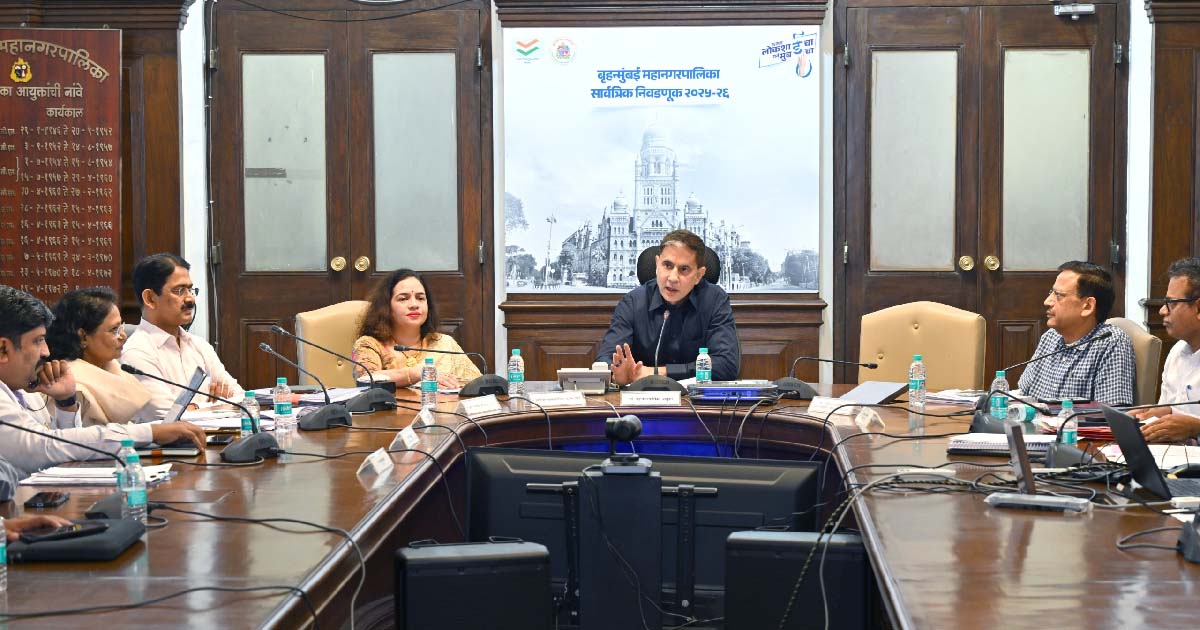General
Understanding Cauvery Water Dispute: A Century-Old Struggle Between Tamil Nadu & Karnataka

The Cauvery River, traversing the southern Indian states of Karnataka, Tamil Nadu, Kerala, and the Union Territory of Puducherry, has been at the center of one of the most heated water disputes. This enduring clash, referred to as the Cauvery water dispute, originates from historical accords and conflicting requirements.
In recent developments, this issue has resurfaced, causing significant turmoil in Karnataka. Kannada groups have launched protests throughout the state, disrupting normal life on numerous occasions. Similarly, Cauvery water plays a crucial role in sustaining Tamil Nadu’s farming community, especially during the cultivation of their ‘Kuruvai’ crop. Around 30 lakh acres of agricultural land in the Cauvery delta region rely on the river’s water for their farming endeavors.
Farmers from both Karnataka and Tamil Nadu have mobilised, advocating for the resolution of the Cauvery water-sharing dispute.
What reignited the controversy?
The recent dispute arose when Karnataka refused to comply with previously agreed-upon water release quotas. Tamil Nadu insisted on a release of 10,000 cusecs of water over a 15-day period, while Karnataka proposed a lower release of 8,000 cusecs for the same duration. Karnataka justified its stance by pointing to inadequate inflow caused by reduced rainfall in the Cauvery catchment area, including its source in Kodagu. The state government stated that from June to August, Kodagu experienced a rainfall deficit of 44%.
To assert its demand, Tamil Nadu approached the Supreme Court to ensure Karnataka’s release of 24,000 cubic feet per second (cusecs) of water from its reservoir. In response, Karnataka argued before the Supreme Court that Tamil Nadu had failed to acknowledge that 2023 constituted a “distressed water year,” not a “normal water year.”
Karnataka’s Deputy Chief Minister, DK Shivakumar, subsequently requested a reconsideration of this decision due to water scarcity issues in the Cauvery basin area since the onset of this year’s monsoon season. Consequently, the state formally wrote to the Cauvery Water Management Authority (CWMA), urging them to review the order to release 10,000 cusecs to Tamil Nadu.
Following discussions during a meeting held on Tuesday, the Cauvery Water Regulation Committee recommended that Karnataka initiate a release of 3,000 cusecs at Biligundlu, commencing from September 28th until October 15th.
History of the dispute
The Cauvery River, known as the “Ganges of the South,” holds immense importance as a crucial water source for the southern states. Its primary usage lies in irrigation, supporting the livelihoods of countless farmers.
This conflict has its origins in the colonial period, during which the British administration formulated agreements to distribute the river’s waters between the princely states of Mysore and Madras Presidency (present-day Karnataka and Tamil Nadu, respectively).
1892 Agreement: The 1892 Agreement between the State of Mysore and Madras pertained to the initiation of new irrigation projects along the river’s course. However, it did not hold the same significance as the 1924 agreement, which would eventually become the root cause of the dispute.
1924 Agreement: In 1910, Mysore proposed the construction of the Kanambadi dam on the Cauvery River. Concurrently, Madras also put forth an irrigation project on the same river. When Madras raised objections to the second phase of the Kanambadi project, it led to the intervention of the Indian government.
Initially, there was hope that the two states could reach a mutually acceptable agreement. However, when this proved unfeasible, a Court of Arbitration, presided over by Sir Henry Griffin, was appointed to address the matter.
Under Griffin’s supervision, an agreement was fashioned on February 18, 1924, intended to remain in effect for the subsequent 50 years. Comprising ten clauses, the 1924 agreement stipulated that, for at least the following five decades, Tamil Nadu and Puducherry would receive 75 percent of the Cauvery water allocation, while 23 percent would be allocated to Mysore, with the remaining share flowing into Kerala, then known as Travancore.
Dispute continues in independent India
Following the state reorganisation in 1956, Tamil Nadu obtained 75 percent of the Cauvery water allocation, which led to an expansion of its irrigated areas. However, the issues continued to persist.
To address the ongoing disputes, the Cauvery Water Disputes Tribunal (CWDT) was established in 1990 with the purpose of arbitrating the water-sharing matter. The tribunal issued its final order in 2007.
According to the tribunal’s ruling, Kerala received an allocation of 30 tmc (thousand million cubic feet), Karnataka was allotted 270 tmc, Tamil Nadu received 419 tmc, and Puducherry was granted 7 tmc.
On February 16, 2018, the Supreme Court issued a unanimous verdict that resulted in a reduction of Karnataka’s annual water releases from 192 TMC to 177.25 TMC, consequently diminishing Tamil Nadu’s water allocation as well.
In accordance with the court’s directives, the Cauvery Water Management Authority was established by the Central government on June 1, 2018, to enforce the judgment.
The present
On August 14, the Tamil Nadu government approached the Supreme Court, seeking its intervention to compel Karnataka to promptly release 24,000 cubic feet per second (cusecs) of water from its reservoirs.
Tamil Nadu urged the Court to instruct Karnataka to adhere to the release of 36.76 TMC of water, as mandated for September 2023 by the final award of the Cauvery Water Disputes Tribunal (CWDT) in 2007.
Karnataka argued that diminished rainfall in the Cauvery catchment area, encompassing regions in Kerala, had resulted in insufficient inflow into its reservoirs.
Chief Minister Siddaramaiah elucidated that historically, whenever there was an excess of water in the reservoirs, Karnataka willingly supplied it to Tamil Nadu. However, unfavorable conditions this year have left Karnataka unable to do so.
Upon reaching the court, the Supreme Court declined to interfere with the orders of the Cauvery Water Management Authority and Cauvery Water Regulation Committee.
These directives mandated Karnataka to maintain the release of 5,000 cusecs of water to Tamil Nadu.
On September 18, the Cauvery Water Management Authority reaffirmed the necessity for Karnataka to persist with the release of 5,000 cusecs (cubic feet per second) of water to Tamil Nadu, aligning with the prior order issued by the Cauvery Water Regulation Committee on September 12.
Contending Perspectives
The Karnataka government maintains that the terms of the 1924 agreement, which had a 50-year expiration date, should not be applicable to the current water distribution scenario.
Karnataka also argues that when the agreement was forged, Tamil Nadu was under British governance, while Karnataka was a princely state, potentially limiting its ability to effectively assert its interests.
In contrast, Tamil Nadu asserts that making fundamental alterations to the 1924 agreement would prove detrimental to both regions. Tamil Nadu contends that the original understanding during the negotiation of the agreement was for its clauses to be reviewed after 50 years rather than completely overhauled.
Maharashtra
Sadanand Data’s path to becoming DGP is paved, Data will succeed Rashmi Shukla in Maharashtra, will take charge from January 1

NIA Chief Sadanand Date: The Appointments Committee of the Cabinet (ACC) of the Central Government has taken a significant administrative decision, approving the immediate repatriation of National Investigation Agency (NIA) Director General and senior IPS officer Sadanand Vasant Date to his parent cadre in Maharashtra. This order, issued on December 22nd, is considered highly significant from both an administrative and political perspective.
Sadanand Date is a 1990 batch IPS officer and is known as a strict, honest, and experienced officer at both the central and state levels. During his tenure as NIA chief, the agency’s role in several sensitive and national security-related cases was further strengthened. Under his leadership, the NIA’s efficiency and credibility have increased.
This decision comes at a time when elections for the Brihanmumbai Municipal Corporation (BMC) are scheduled for January. The BMC is one of the largest municipal corporations in the country, and maintaining law and order during its elections is a major challenge for the state police. Therefore, experienced leadership at both the central and state levels is considered crucial.
The term of the current Director General of Police (DGP) of Maharashtra, Rashmi Shukla, ends on December 31st. In this context, Sadanand Date’s name is being considered as a frontrunner for the next DGP of the state. According to administrative sources, Date’s appointment could ensure a fair and robust security arrangement during the elections.
Sadanand Date is known as the courageous officer who directly confronted terrorist Ajmal Kasab at the Cama and Albless Hospital during the 26/11 Mumbai terror attacks. He was seriously injured during the incident, but his courage and dedication to duty earned him national recognition.
If Sadanand Date is appointed as the new DGP of Maharashtra, it will be considered a major and positive step for the state’s law and order and security apparatus. Administrative circles believe that his appointment will boost the morale of the police force and help in conducting the upcoming elections peacefully.
Maharashtra
Mumbai: Rickshaw driver beaten up in Vikhroli on suspicion of child theft, burqa-clad driver did this to collect fare, police claim

Mumbai: Vikhroli Park Site, after the rumor of a child theft, chaos broke out and an auto rickshaw driver was attacked by a mob when he went to the street of Vikhroli Madina Masjid dressed in a burqa to collect his fare. During this, people suspected that the child had come to steal, after which the mob beat him up, but the police reached the spot and then took him into their custody. During interrogation, it was found that the child had not come wearing a burqa to steal but to collect the fare. He was dressed in a burqa so that no one would recognize him and he could easily collect his fare and go back, but unfortunately, the people caught him and the police took him out of the mob’s possession and safely took him to the police station. After that, the police confirmed that the child had not come to steal. Further investigation is underway in this matter. The police said that along with the investigation, it is also being found out whether he really came to collect the fare or not. He is a thief. Initial investigation has revealed that the child is not a thief. The police have confirmed that the rickshaw driver is not a thief.
Maharashtra
Municipal Corporation in Mumbai is committed to conducting administration and election process in a fearless, free and transparent environment: Bhushan Gagrani

Mumbai: Municipal Corporation Administration and Election System Mumbai Municipal Corporation is committed to conducting the election process for the general elections 2025-26 in a completely fearless, free, transparent and disciplined environment. In this regard, the Mumbai Municipal Corporation Administration has made all and extensive preparations and all necessary measures are being implemented effectively. The role of political parties is very important in the election process. In order to promote democratic values and make the election process fair, transparent and credible, all political parties, their office bearers and workers should strictly follow the code of conduct framed by the State Election Commission and cooperate with the Municipal Corporation Administration. A positive and exemplary example should be set in the electoral process, this appeal was made by Municipal Commissioner and District Election Officer Bhushan Gagrani. A meeting was held with representatives of political parties at the Municipal Corporation headquarters today in connection with the Mumbai Municipal Corporation general elections 2025-26. On this occasion, Gagrani presented detailed information about various administrative, technical and legal aspects of the elections.
Additional Municipal Commissioner (City) Dr. Ashwini Joshi, Special Duty Officer (Election) Vijay Balmwar, Joint Commissioner (Tax Assessment and Collection) Vishwas Shankarwar, Assistant Commissioner (Taxation and Collection) Gajanan Belle, UP Election Officer Vijay Kumar Suryavanshi and other office bearers and representatives of various political parties were present in the meeting. Political parties were provided detailed information about the offices of 23 Election Decision Officers and their scope of work for the smooth conduct of the elections. Along with this, guidance was also given on the process of filing nomination papers, scrutiny of applications, registration of objections and how to contact these offices for day-to-day work in the election process. Municipal Commissioner Shri said that all necessary arrangements have been completed at the level of the Election Decision Officer so that the candidates do not face any technical problems.
Additional Municipal Commissioner (City) Dr. Ashwani Joshi said that all guidelines have been given so that the candidates do not make any mistakes while filing nomination papers (candidate applications) for the elections. The concerned persons should submit all the information in the prescribed format. Candidates should take special care that no application is rejected due to technical difficulties. It is mandatory for the candidates to fill all the information correctly and clearly in the affidavit submitted with their application. He said that if any column is left blank in the affidavit or if incorrect information is found, the nomination of the candidate, along with all other matters, can be cancelled.
Joint Commissioner (Tax Assessment and Collection) Vishwas Shankarwar said that the main objective of the administration is to increase the voting percentage to strengthen democracy. For this, political parties should create awareness among the voters. Public awareness is being created among the voters under the ‘SVEEP’ program by the Municipal Corporation. Also, it is mandatory to follow the guidelines of the esteemed State Election Commission regarding election expenses. Candidates should keep a record of every expense incurred during the election campaign and submit the account of election expenses within the stipulated time. Various doubts raised by the representatives of political parties on various issues were cleared including caste verification certificate, toilet usage certificate, Appendix 1 and Appendix 2, appointment of representatives of election candidates.
-

 Crime3 years ago
Crime3 years agoClass 10 student jumps to death in Jaipur
-

 Maharashtra1 year ago
Maharashtra1 year agoMumbai Local Train Update: Central Railway’s New Timetable Comes Into Effect; Check Full List Of Revised Timings & Stations
-

 Maharashtra1 year ago
Maharashtra1 year agoMumbai To Go Toll-Free Tonight! Maharashtra Govt Announces Complete Toll Waiver For Light Motor Vehicles At All 5 Entry Points Of City
-

 Maharashtra1 year ago
Maharashtra1 year agoFalse photo of Imtiaz Jaleel’s rally, exposing the fooling conspiracy
-

 National News1 year ago
National News1 year agoMinistry of Railways rolls out Special Drive 4.0 with focus on digitisation, cleanliness, inclusiveness and grievance redressal
-

 Maharashtra1 year ago
Maharashtra1 year agoMaharashtra Elections 2024: Mumbai Metro & BEST Services Extended Till Midnight On Voting Day
-

 National News1 year ago
National News1 year agoJ&K: 4 Jawans Killed, 28 Injured After Bus Carrying BSF Personnel For Poll Duty Falls Into Gorge In Budgam; Terrifying Visuals Surface
-

 Crime1 year ago
Crime1 year agoBaba Siddique Murder: Mumbai Police Unable To Get Lawrence Bishnoi Custody Due To Home Ministry Order, Says Report












